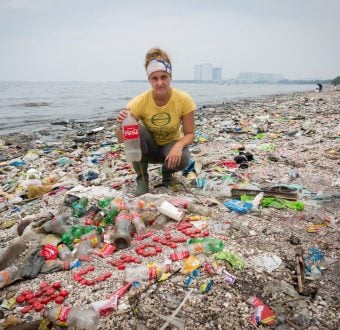Following the April 17, 2013 fertilizer disaster in West, Texas, President Obama stated at the memorial service for the 15 people killed, “we’ll be there even after the cameras leave and after the attention turns elsewhere.”
And on August 1, 2013, the president issued Executive Order 13650, directing federal agencies to develop proposals to modernize safety and security rules, and within nine months to “develop a plan for implementing practical and effective improvements to chemical risk management.”
Given the President’s strong record on preventing chemical disasters, this was a very promising first step. The looming threat of a chemical disaster impacts more than 100 million Americans, especially low-income communities of color living closest to chemical facilities. And finally, in the waning hours of President Obama’s administration, the EPA has come up with this long-awaited safety rule for chemical facilities — but it’s not final yet.
Here’s what that means.
What’s Proposed
The EPA published the proposed rule earlier this month in the Federal Register, leaving it open for public comment until May 13. The first step towards finalizing the rule comes on March 29, when there will be a full-day public hearing at EPA’s DC headquarters, in Room 1153 (Map Room) at 1201 Constitution Ave, NW, from 9:00am until 8:00pm to gather feedback.
Once finalized, this rule will establish a precedent on safety standards for facilities that use, produce, or store large quantities of chemicals (such as chlorine gas), which can endanger entire urban areas when they are released. Such facilities include but are not limited to: chemical manufacturers, refineries, bleach and municipal wastewater treatment plants. The proposal currently only requires 13.5% of the country’s 12,542 regulated facilities to conduct safety assessments to determine the feasibility of implementing the safer chemicals and processes that prevent chemical disasters, known as inherently safer technologies (IST).
The EPA proposal also fails to:
- Require the use of IST even where feasible.
- Make the results of the safety assessments public.
- Send the safety assessments to the EPA.
A rule that doesn’t include these key measures will fail to protect our homes, schools, and businesses from the threat of a chemical disaster — and that’s where you come in.
Looking Forward
The rule isn’t quite there yet, but EPA acknowledgement of necessary IST assessments paves the way for meaningful progress. The shortcomings of the proposal lie in both the failure to implement IST as well as the lack of public transparency and ultimately accountability for conducting thorough IST assessments. It appears that the EPA knows what needs to be done but is not yet willing to commit to a proposal that puts prevention first.
In EPA administrator Gina McCarthy’s recent op-ed addressing the fallout from the Flint water crisis, she writes, “We have the opportunity to harness the resources and attention needed to make meaningful change.” But that change won’t happen without us.
Now is the time to speak up and tell the EPA to make this “meaningful change” that can prevent future disasters.
Take action: tell the EPA to prevent chemical disasters and protect our communities.



